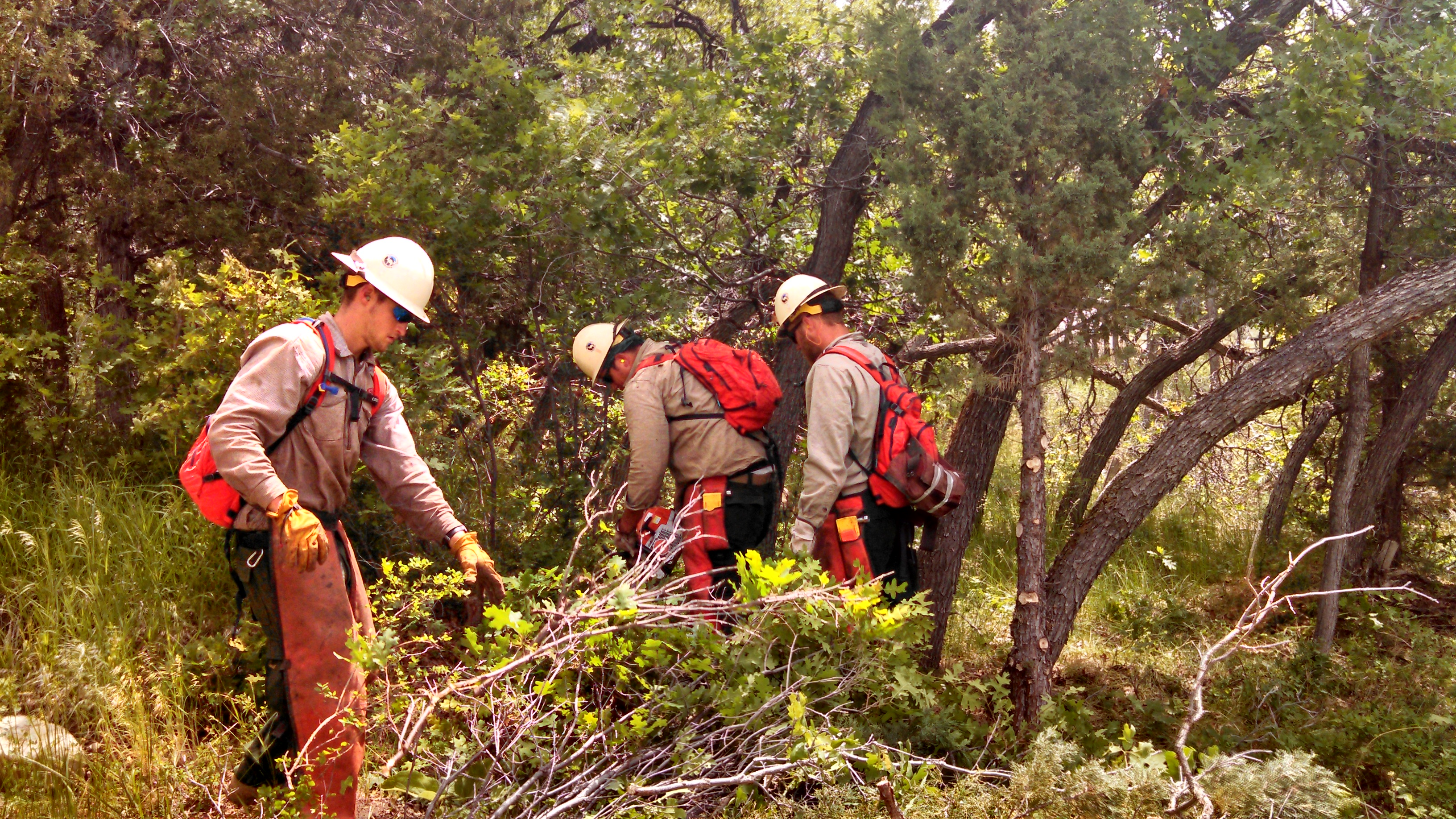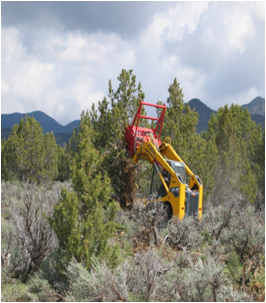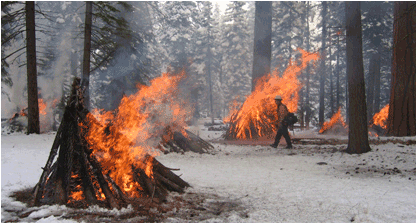Fiscal Highlights - May 2015
|
What Are We Doing to Reduce Catastrophic Wildfires in Utah? -
Ivan D. Djambov ( The Division of Forestry, Fire, and State Lands is tasked in S.B. 56, Wildland Fire Policy (2015 GS), to "coordinate the development of a comprehensive, state-wide wildland fire prevention, preparedness and suppression policy." The division has actually been working on this for a couple of years prior to the passage of the legislation. Their efforts started as a response to Governor Herbert's charge following the difficult 2012 fire season. The division has been preparing to implement the National Cohesive Wildland Fire Management Strategy (NCS). The intent is to reduce the risk, cost, and impact of wildfire over time in Utah. The three goals of the NCS are:
Who are the partners? The state fire managers' efforts are led by six regional work groups comprised of fire professionals and stakeholders from the respective region. A statewide steering committee advises the division and oversees the actions purposed by the regional groups. A broad spectrum of stakeholders actively participate at both the regional and state-wide levels: county and municipal elected officials, state legislators, governor's office, Public Lands' Office, SITLA, Department of Agriculture and Food, Division of Wildlife Resources, the USDA, Forest Service, Natural Resources Conservation Service, Bureau of Land Management, and various NGOs, such as Trout Unlimited. These partners provide input into project and action planning, prioritization, funding and implementation.
What are the results? In FY 2015, the Division of Forestry, Fire, and State Lands and its partners are working to complete 21 projects in 15 counties. Those include approximately 2,500 acres of fuels reduction and 3.5 miles of installed fencing (for better use of grazing as a fuels treatment tool). In FY 2016, the Statewide Steering Committee has approved 27 projects in 12 counties and a state-of-the-art wildfire risk assessment. This risk assessment is key and will be the tool used by both the regional work groups and the steering committee to prioritize geographic areas and associated values at risk, as well as the actions proposed to reduce risk. The division reported that the planning for FY 2017 has already begun through the regional work groups assessing values at risk, prevention, preparedness, and mitigation actions to reduce risk in their areas. How are the efforts funded? The initial appropriation was $1.9 million one-time in FY 2015 from the Sovereign Lands Management Restricted Account. This funding was limited to fuels reduction projects only, funding 21 projects. The Legislature appropriated for FY 2016 an additional $2.5 million one-time from the same source. Along with state funding, the Division of Forestry, Fire, and State Lands has been able to receive other funds and in-kind contributions. In January 2015, the National Resource Conservation Service's (NRCS) Regional Conservation Partnership Program awarded $1.7 million (five-year award agreement) to the division. Of the total allocation, $1,050,000 will be used to fund catastrophic fire mitigation projects on private ground, $500,000 to support a coordinator position for five years, and $150,000 will be retained by NRCS for their technical assistance. The US Forest Service also provided an initial $100,000 grant to the division in mid-2014 to support the administrative costs of developing and implementing the catastrophic wildfire reduction strategy. |
Bond Refunding: Saving Money on Debt Service - Clare Tobin Lence Bonds are used to finance large State initiatives, usually in the form of major infrastructure proj...Budget Policy Changes Enacted in 2015 G.S. - Steven M. Allred During the 2015 General Session, the Legislature passed several bills that had an impact on budgeta...Classroom Teachers in Utah's Public Schools - Ben Leishman Do classroom teachers really only represent 50% of all full time equivalent (FTE) positions in the ...Department of Environmental Quality Significant Changes - Brian Wikle Executive DirectorAmanda Smith, Executive Director of the Department of Environmental Quality (DEQ)...Employment Drives Economic Growth - Andrea Wilko Strong employment continues to be the largest factor in economic growth in Utah. Economists...Justice Reinvestment Initiative Funding and Performance Goals - Gary R. Syphus House Bill 348, Criminal Justice Programs and Amendments, amended current criminal justice statute,...The April Tax Payments are In - How Do They Look? - Thomas E. Young Every year staff presents you with point estimates for year-end revenue collections to the General ...UCAT Program Approvals - Angela J. Oh Certificate programs provided by campuses of the Utah College of Applied Technology (UCAT) are deve...Utah System of Higher Education Increases Tuition by 3% for 2015-2016 - Spencer C. Pratt During its regular meeting on March 27, 2015, the State Board of Regents approved a first-tier tuit...What Are We Doing to Reduce Catastrophic Wildfires in Utah? - Ivan D. Djambov The Division of Forestry, Fire, and State Lands is tasked in S.B. 56, Wildland Fire Policy (2015 GS...Where Does the Department of Health's Fee Revenue Come From? - Russell T. Frandsen The Department of Health estimates total revenue of $13.1 million for FY 2016 from 1,200 fees. &nbs...Workforce Services Will Report on $29 Million of Additional One-time TANF Projects - Stephen C. Jardine The Legislature passed S.B. 47, Temporary Assistance for Needy Families, during its 2015 General Se... |
Reports/Archive | Budget Process | Office Background | Who's Who | Organization Chart
Office of the Legislative
Fiscal Analyst
House Building, Suite W310
Salt Lake City, UT 84114
Phone (801) 538-1034 Fax (801) 538-1692


